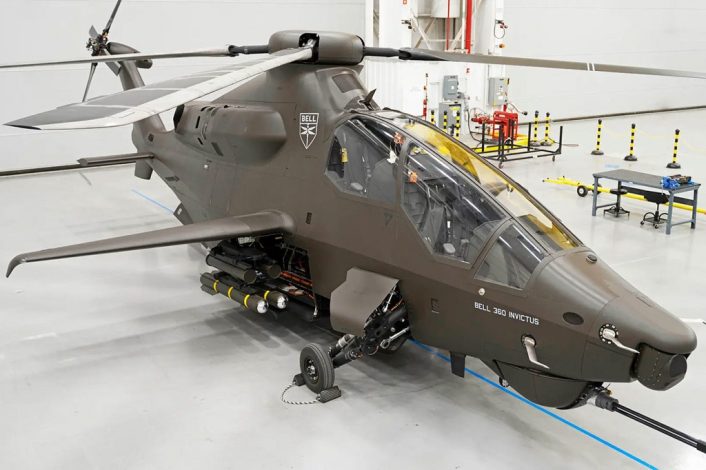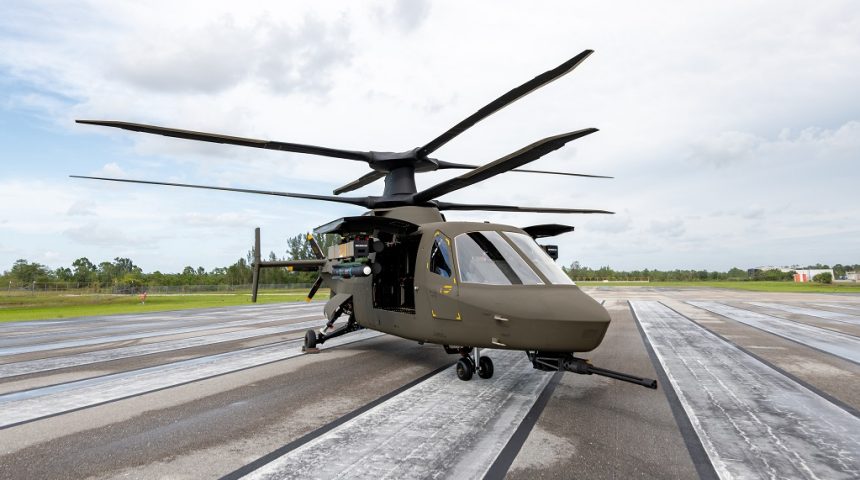Along with FARA, the U.S. Army will also terminate the UH-60V program, postpone the Improved Turbine Engine Program production and retire legacy UAS.
The U.S. Army has unexpectedly announced the cancellation of the Future Vertical Lift’s Future Armed Reconnaissance Aircraft Program, in an abrupt change of its plans for the 2030s’ Army aviation. FARA was intended to fill the capability gap left by the retirement of the Bell OH-58D Kiowa Warrior with initial fielding of the new helicopter by 2028, after the fly-off competition between the Bell 360 Invictus and the Sikorsky Raider X planned this year.
The reason to axe the program after spending in excess of two billion dollars is based on lessons learned and a sober assessment of the modern battlefield, said the service in a press release. As part of this “Aviation Investment Rebalance”, the U.S. Army says it will invest in “cutting-edge, effective, capable and survivable unmanned aerial reconnaissance capabilities and the procurement of commercial small unmanned systems”, thus replacing the manned FARA aircraft with unmanned assets.
“We are learning from the battlefield – especially in Ukraine – that aerial reconnaissance has fundamentally changed,” said the Chief of Staff of the Army, General Randy George. “Sensors and weapons mounted on a variety of unmanned systems and in space are more ubiquitous, further reaching, and more inexpensive than ever before. I am confident the Army can deliver for the Joint Force, both in the priority theater and around the globe, by accelerating innovation, procurement and fielding of modern unmanned aircraft systems, including the Future Tactical Unmanned Aircraft System, Launched Effects, and commercial small unmanned aircraft systems.”
This way, the Invictus and the Raider X suffered the same fate of the other helicopters that were supposed to replace the OH-58 in the last two decades, the RAH-66 Comanche and the ARH-70 Arapaho. But the cancellation of FARA is not the only change the Army is making to its plans.

In fact, the service is also ending the production of the upgraded UH-60V Black Hawk, which was intended to give the UH-60L 10 more years of life, because of cost growth; delaying the production of the Improved Turbine Engine (ITEP) to ensure adequate time to integrate it with AH-64 and UH-60 helicopters; retiring the legacy RQ-7 Shadow and RQ-11 Raven as they are considered not capable or survivable on today’s battlefield.
The U.S. Army says these decisions will free up resources for a new multi-year contract to procure the UH-60M Blackhawk and related upgrades, production of the CH-47F Block II Chinook, the Future Long Range Assault Aircraft program continuation and research and development of unmanned aerial reconnaissance capability, including future tactical UAS and launched effects.
The rebalance, however, still faces the Congress’ approval, which should not be taken for granted, as representatives are already protesting the decision. In the meanwhile, the Army says the FARA program will go on until the end of the year to complete the prototyping activities, which were expected to finish with a fly-off competition to determine the winning design to be selected for fielding.
The competition was initially expected to take place last year, however it had to be delayed because of the delays of the T901 ITEP engine program. In fact, both Invictus and Raider X prototypes were already complete and were waiting for the delivery of the engines’ delivery to begin integration, ground and flight testing. Both Bell and Sikorski did not release statements about the Army’s decision and it is not known at this time how the program’s activities will change.









